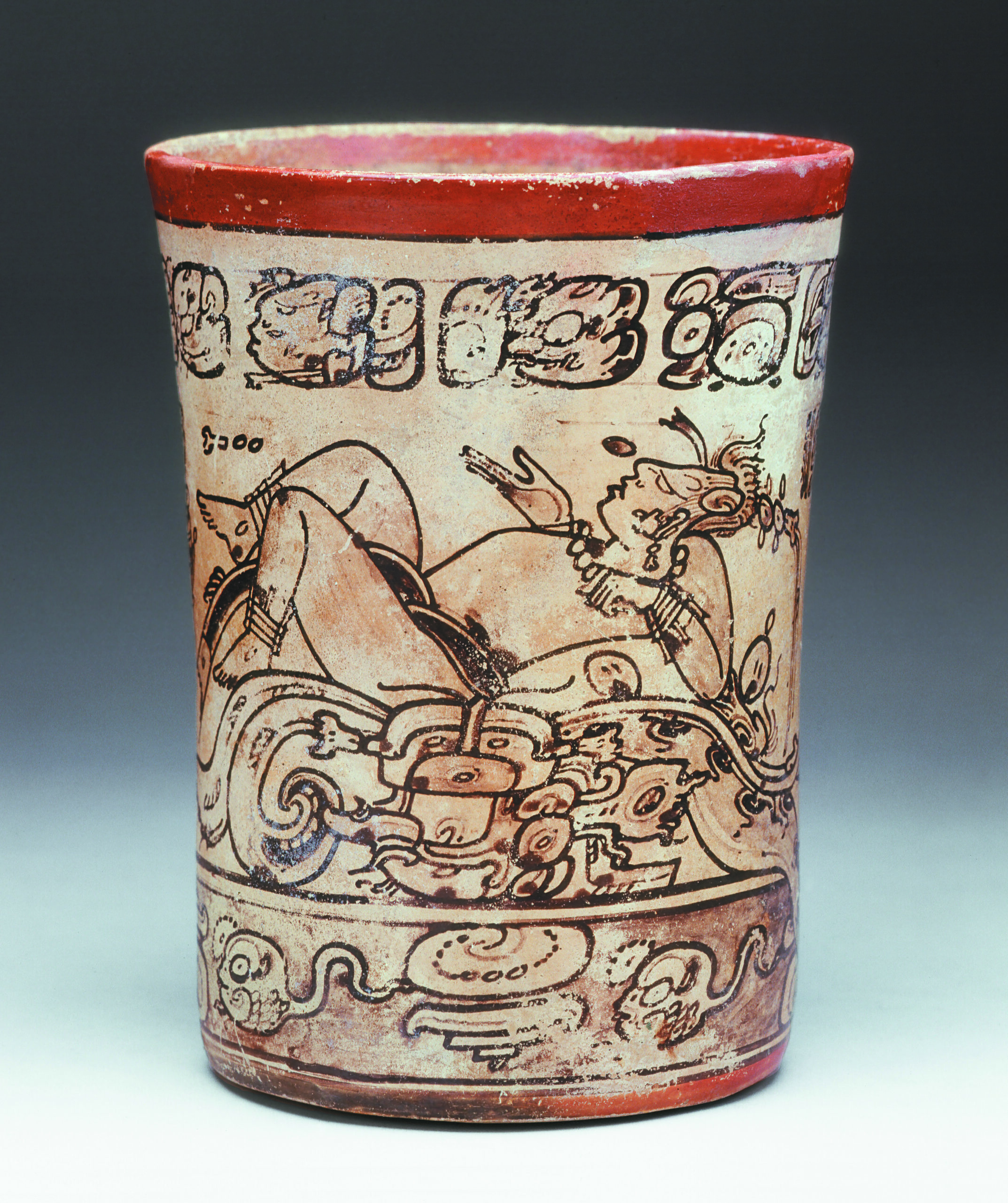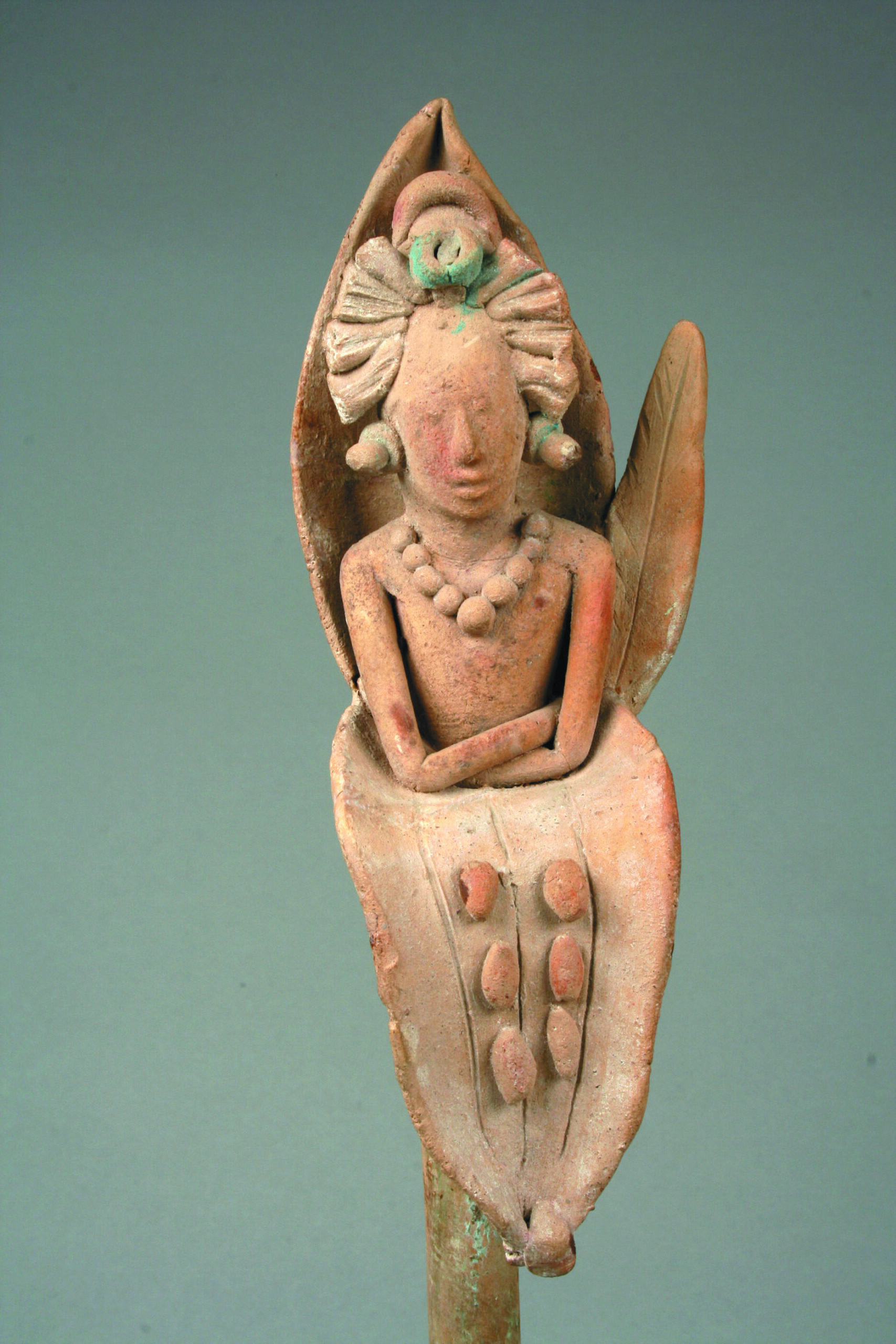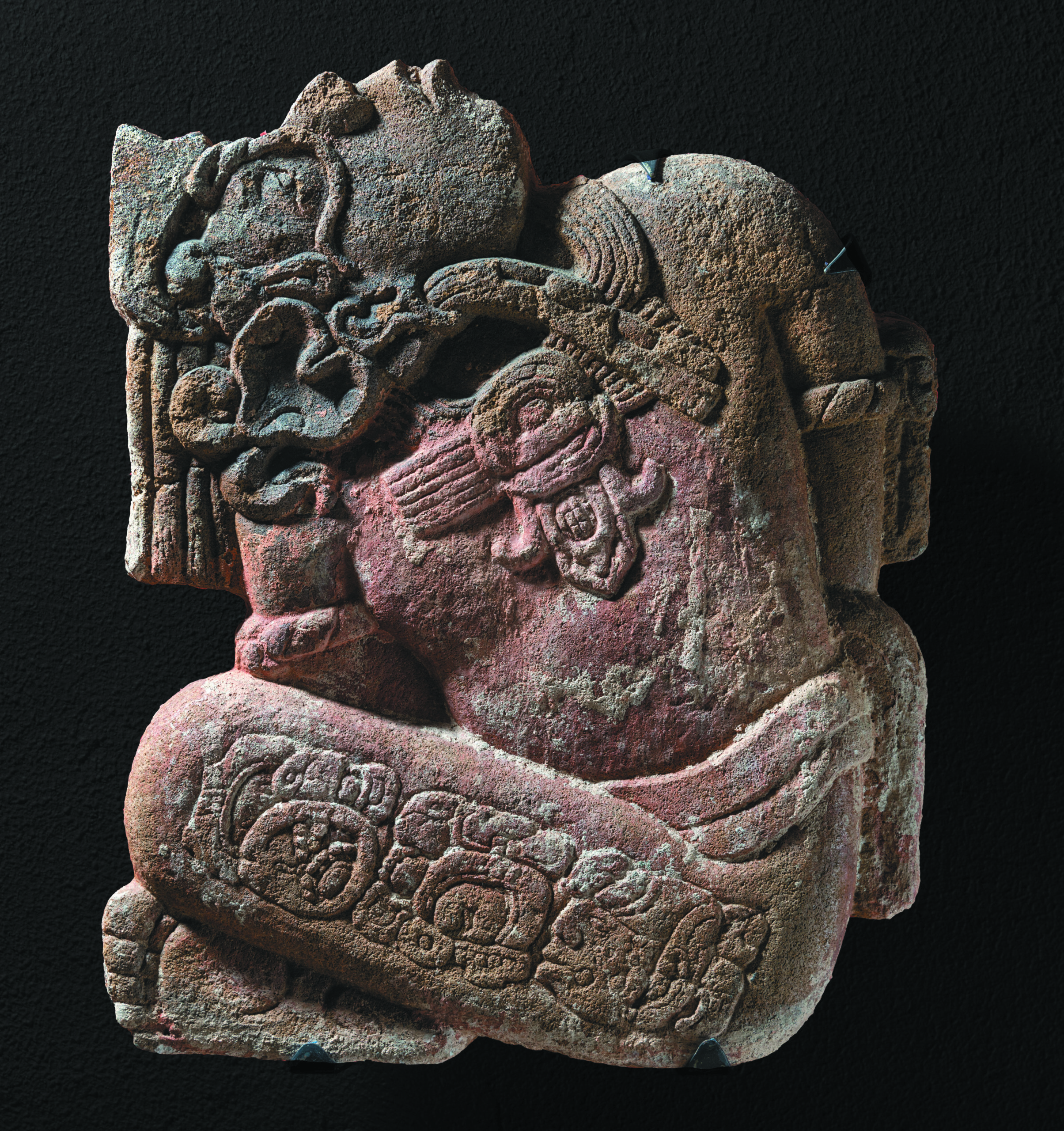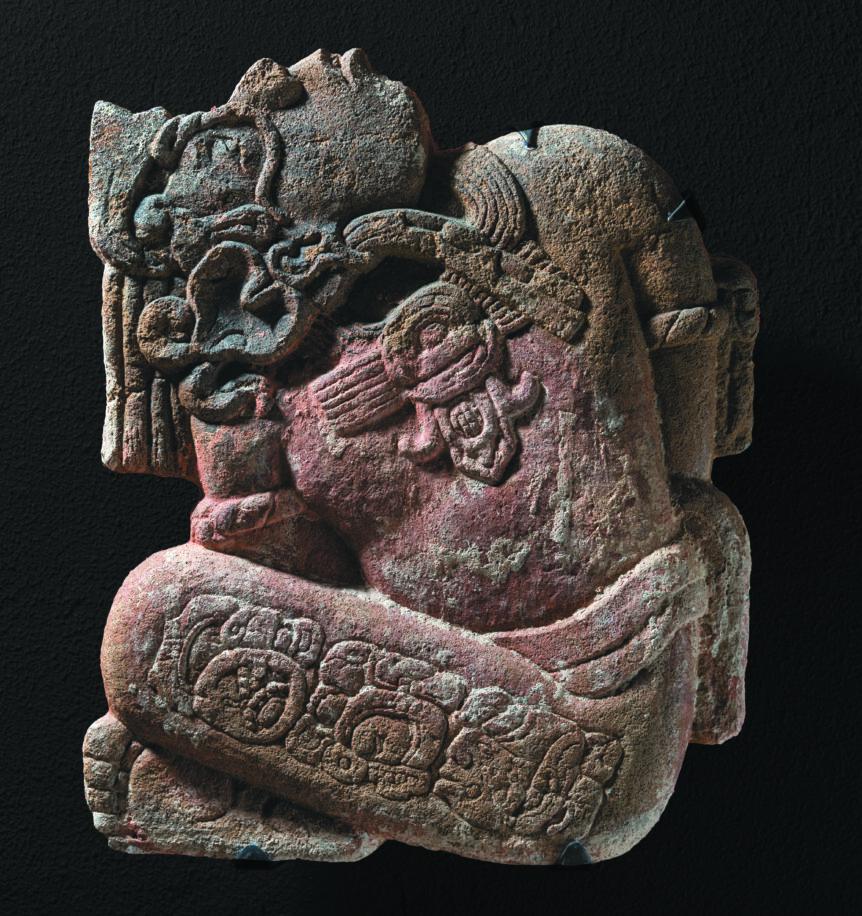
Codex-style vessel showing the rebirth of the Maize God, Maya, 650– 800 ad. Museo Nacional de Antropología, Mexico City, Mexico, Secretaría de Cultura–Instituto Nacional de Antropología e Historia; all photographs courtesy of the Metropolitan Museum of Art.
In an act of vandalism on par with the burning of the Library of Alexandria, during the sixteenth century Spanish conquistadors and priests destroyed the Maya codices, or the written sum of that civilization’s history and literature. Fortunately, not all knowledge is flammable, and today scholars look to pictograph-covered ceramics and stone carvings to fill in the gaps in the historical record. Lives of the Gods: Divinity in Maya Art at the Metropolitan Museum of Art investigates how the Maya understood the ways that gods interacted with human society and the natural world, by way of nearly one hundred objects dating from 250 to 900 ad.

Whistle with the Maize God emerging from a flower, Maya, 600– 900 ad. Metropolitan Museum of Art,Michael C. Rockefeller Memorial Collection, bequest of Nelson A. Rockefeller.
Like the pagan gods of pre-Christian Europe, Maya deities were thought to live (so to speak) lives that were very much like our own. They were born, courted fortune, and died, perhaps to be reincarnated. The Maize God, a superlative figure in a region where there are enough cultivated types of corn to boggle the minds of stateside museumgoers, re-appears in various objects throughout the exhibition, and in various guises. He’s born from a ceramic flower, is carved in stone as a virile youth with coiffed hair and jade jewelry, and takes the form of a cacao tree—another important Maya crop— on the side of a bowl. Instead of inhabiting a realm totally separate from that of human beings, gods used Maya rulers as go-betweens, as seen in a high-relief carving of a conference between a lord, his companion, and a small, jaguar-headed divinity. A fearsome predator of the American jungle, the jaguar exerted special psychic influence on the Maya, who believed the Jaguar God met his fiery end at the hands of the rest of the godly pantheon. A pair of standalone relief carvings found at the Toniná archaeological site in southern Mexico show captives apparently re-enacting this fate, as suggested by their cat-shaped ears.

Monument 155 (Captive Impersonating Jaguar Deity), Maya, c. 700 ad. Museo de Sitio de Toniná, Mexico, Secretaría de Cultura– Instituto Nacional de Antropología e Historia.
Most excitingly, for the first time in a major exhibition, curators were able to identify several of the Maya sculptors by name, including K’in Lakam Chahk, who signed an ad 795 architectural panel discovered in the Usumacinta River region of Guatemala and Mexico that shows a woman in a huipil talking to the lightning god K’awiil. Such belated recognition isn’t quite reincarnation, but is a rebirth of sorts for these long-forgotten artists.
Lives of the Gods: Divinity in Maya Art • Metropolitan Museum of Art • to April 2 • metmuseum.org

